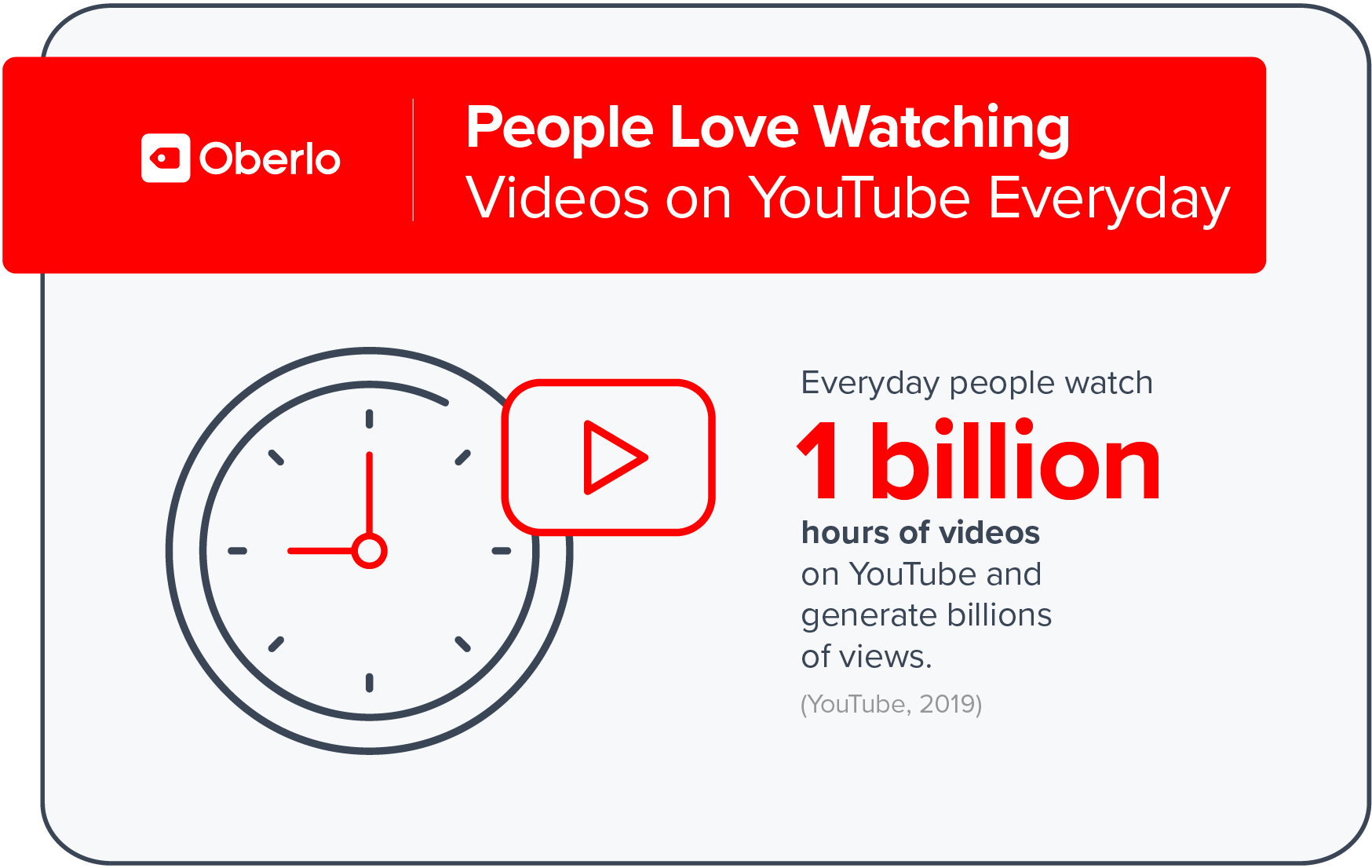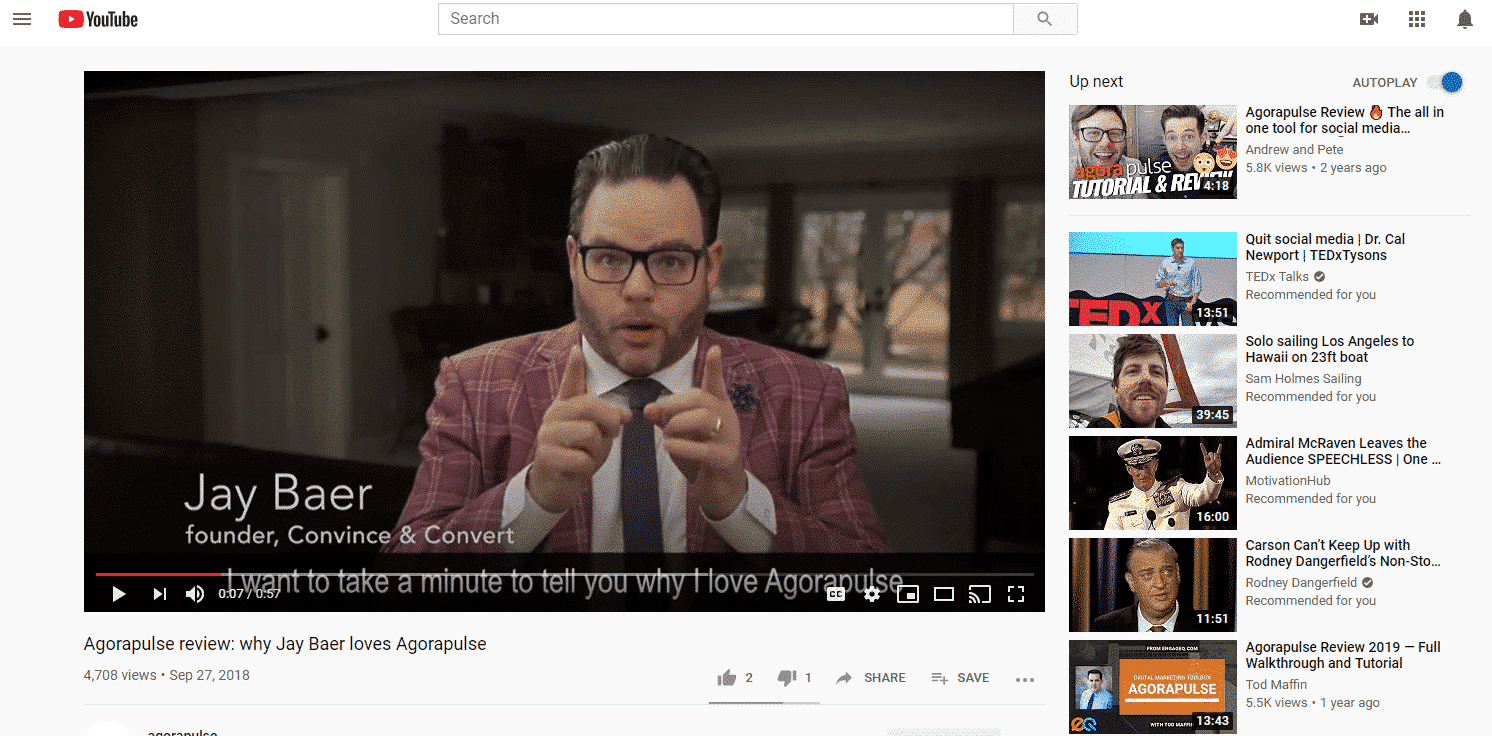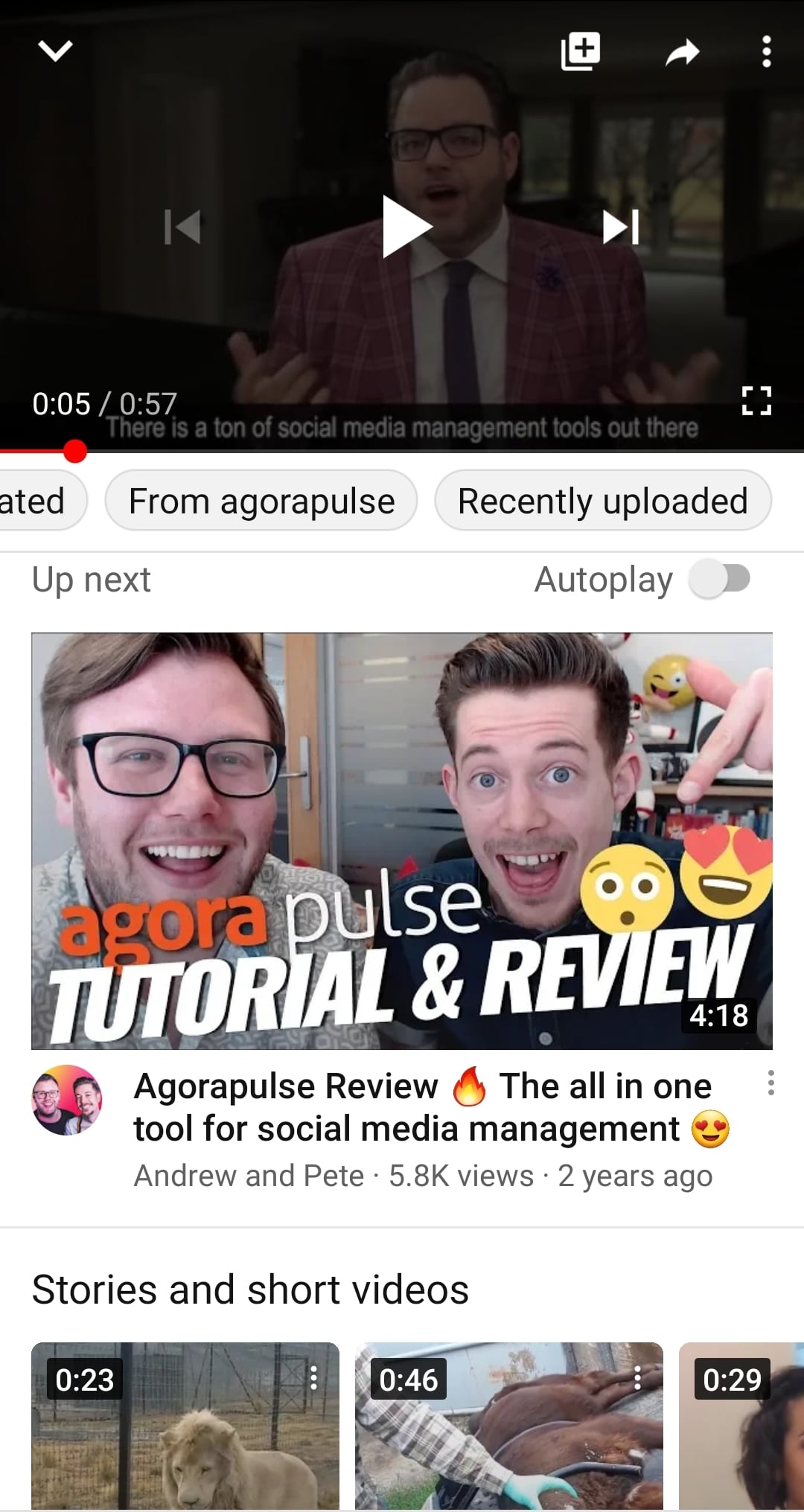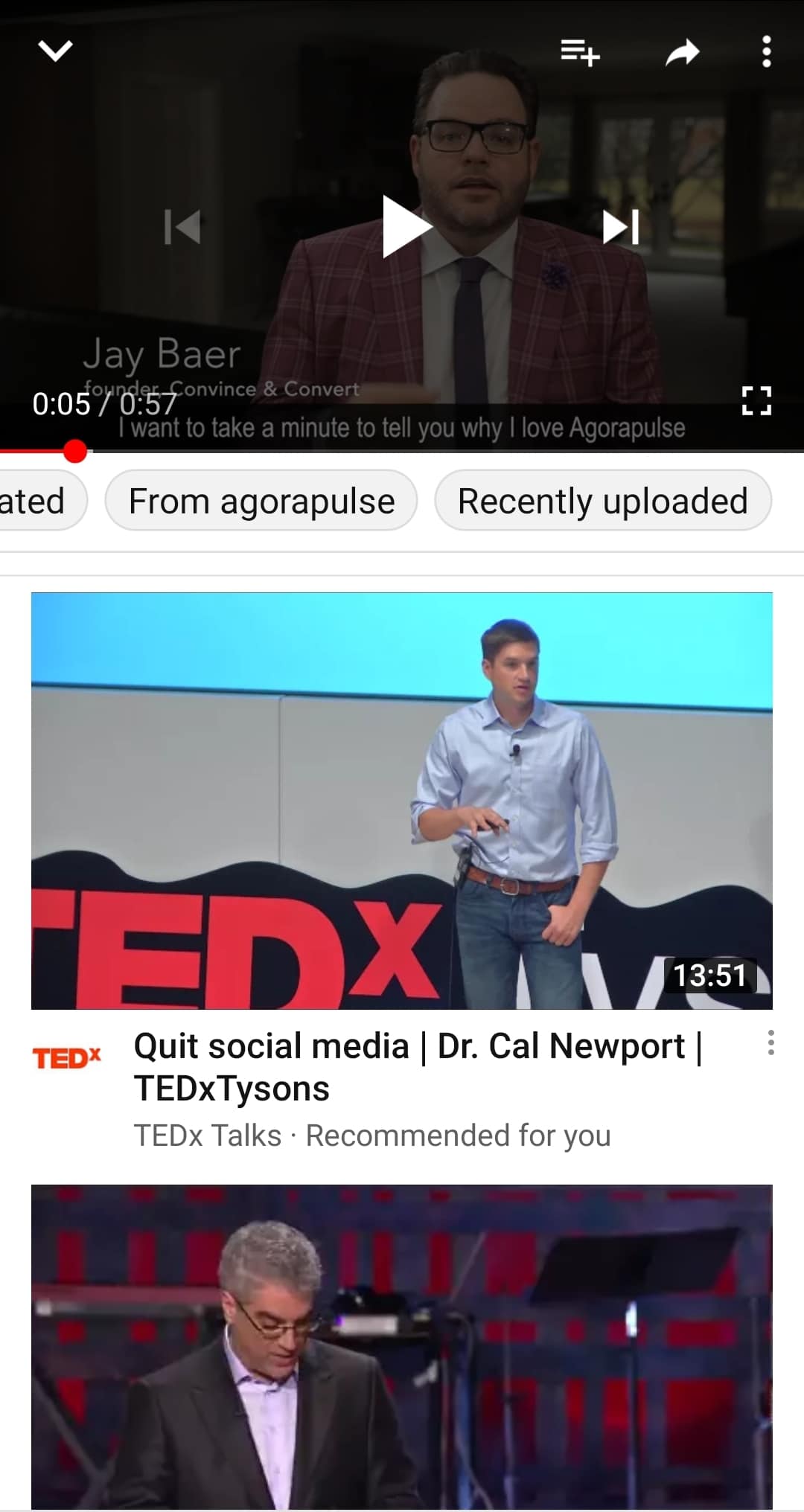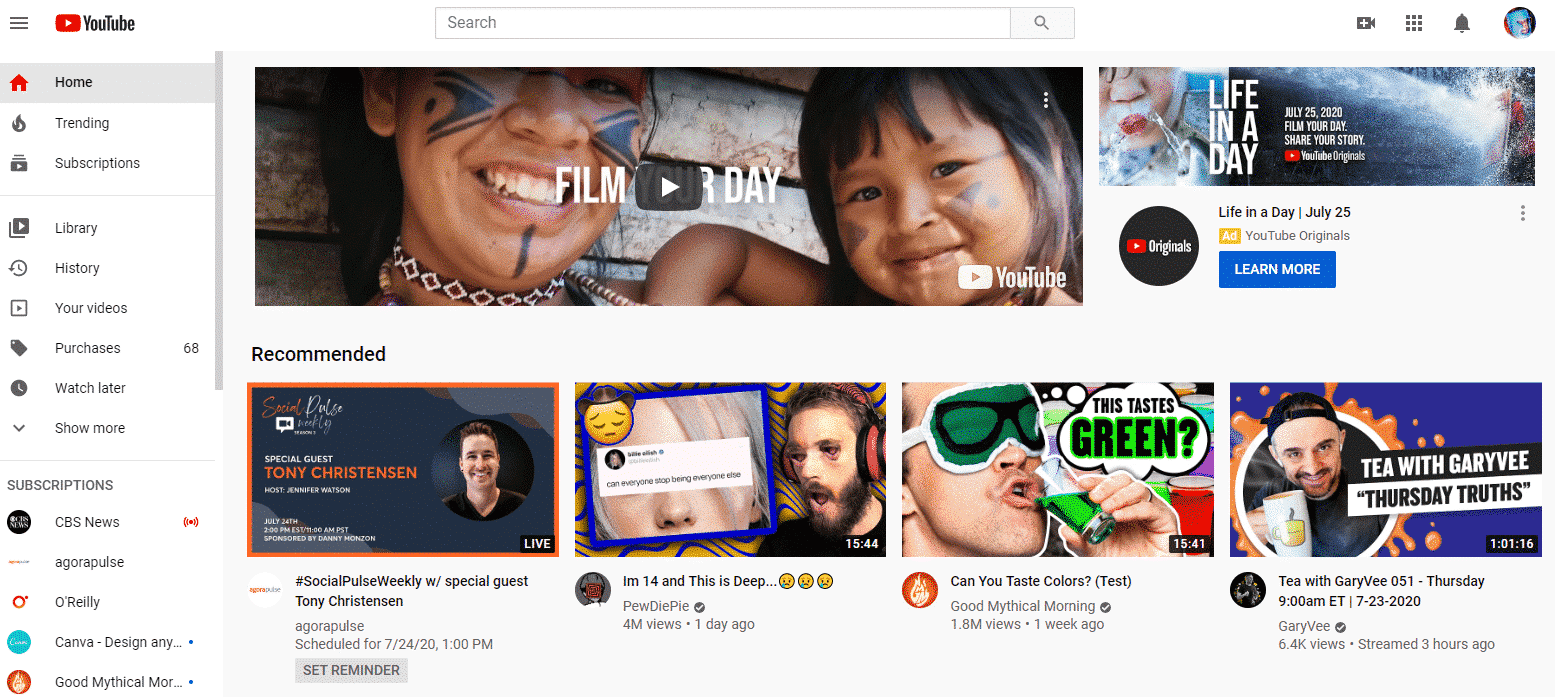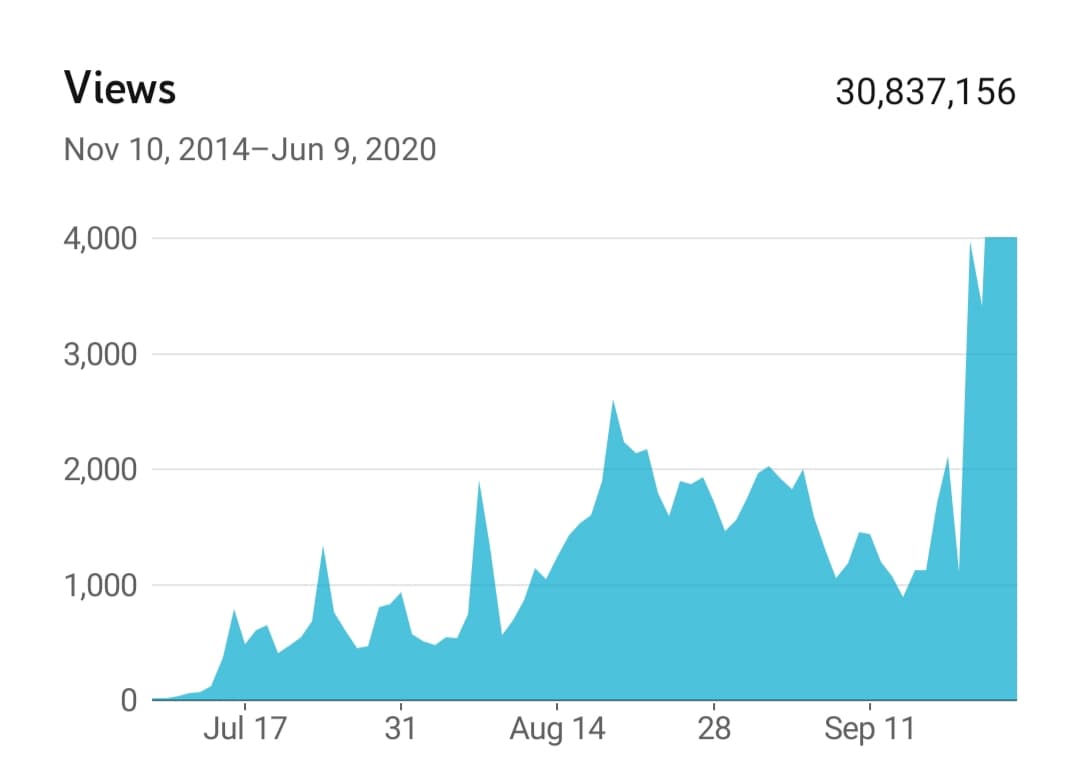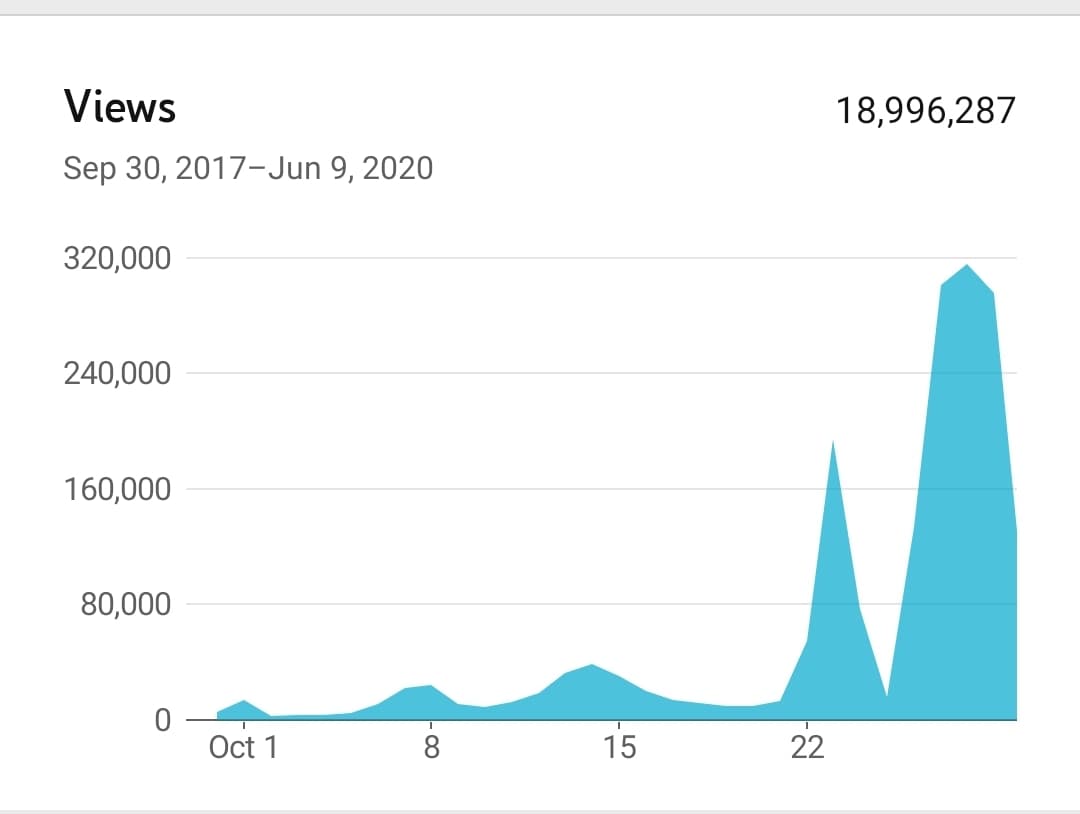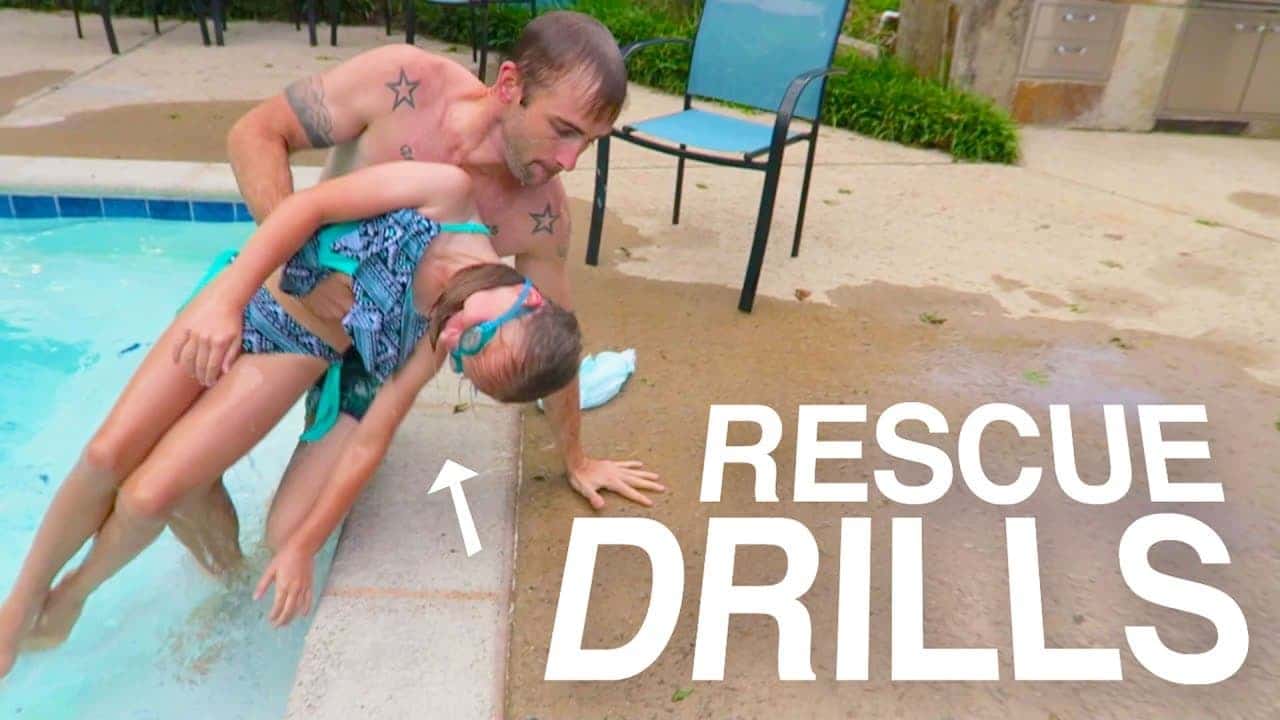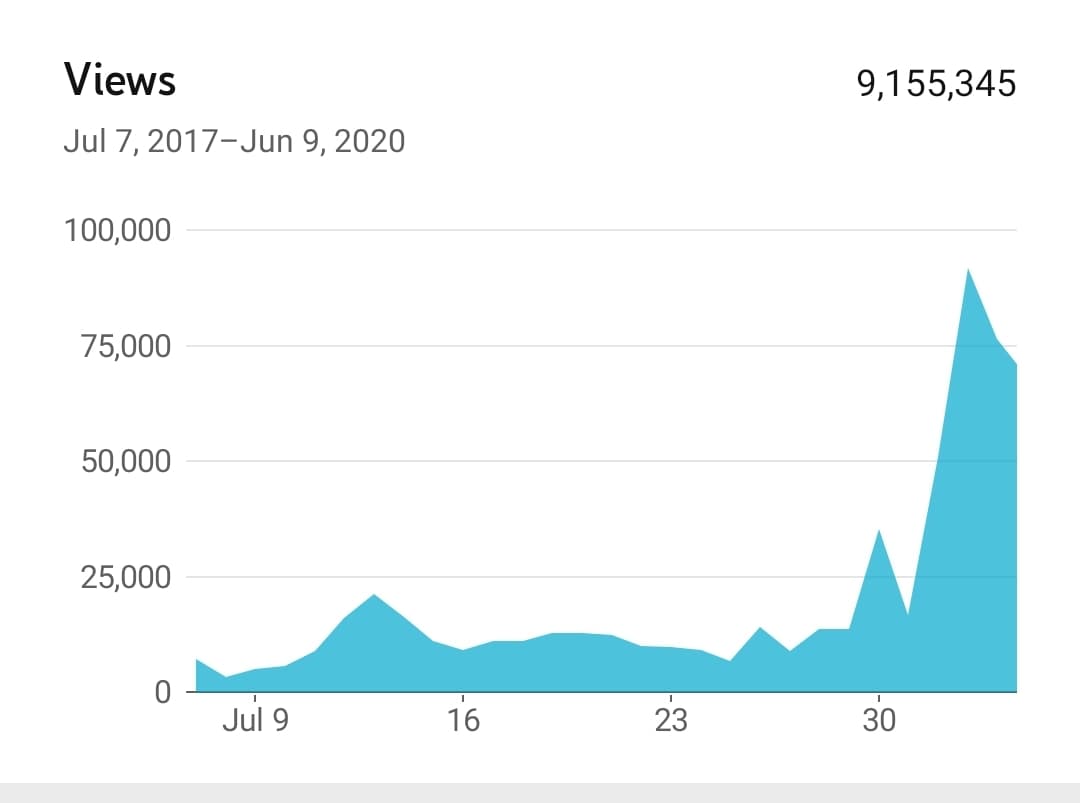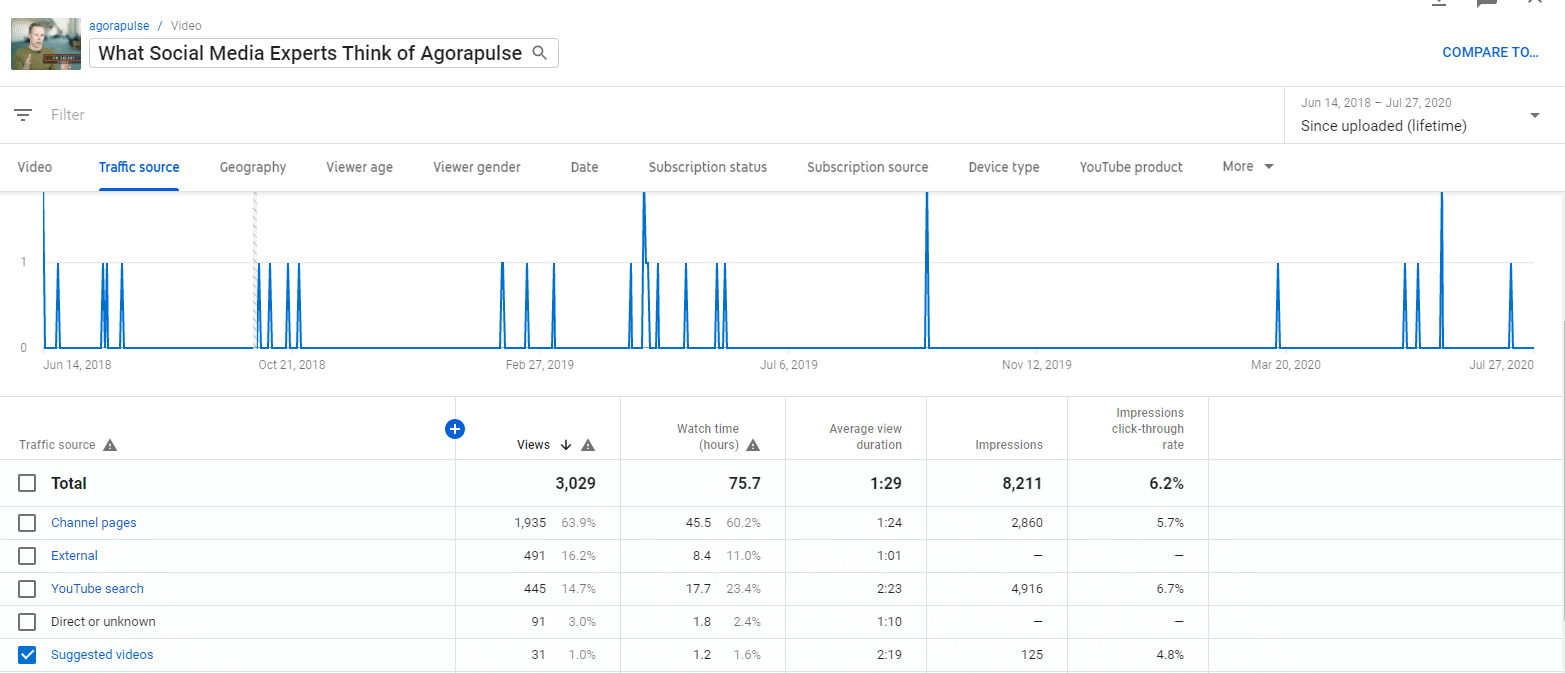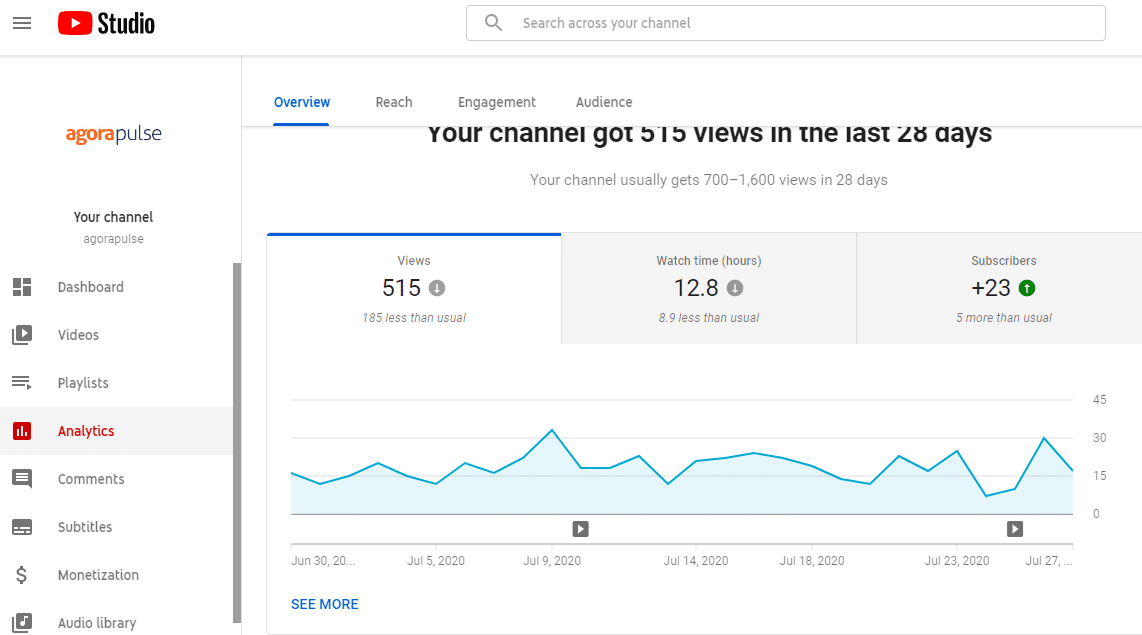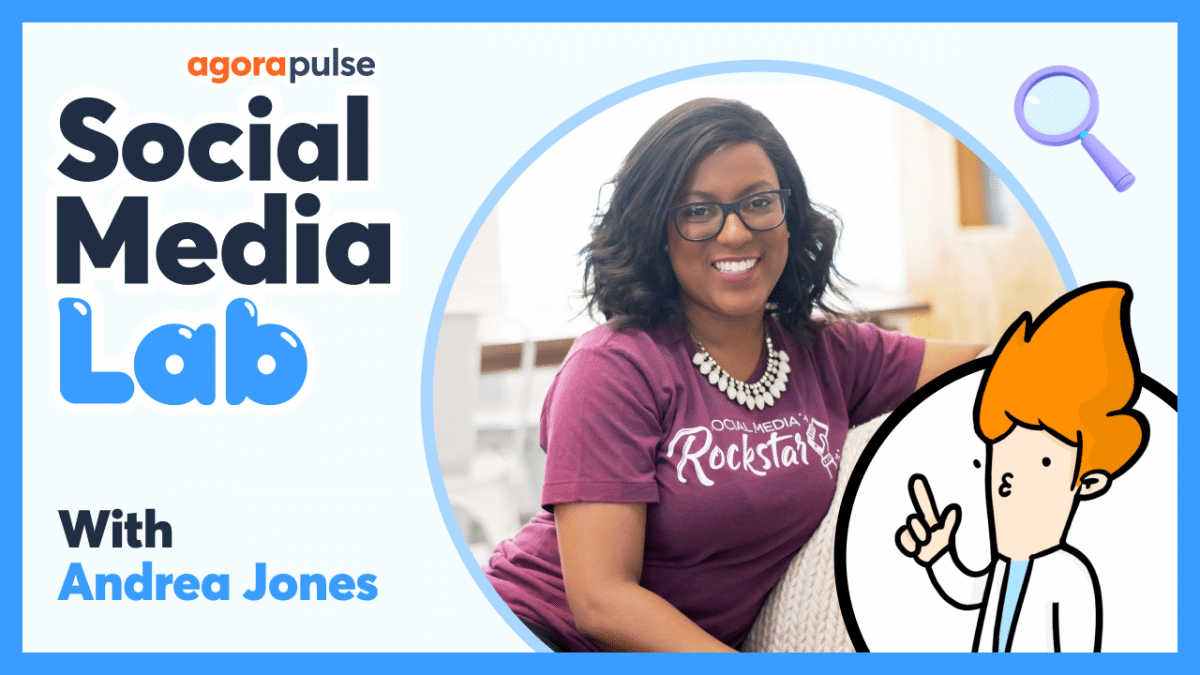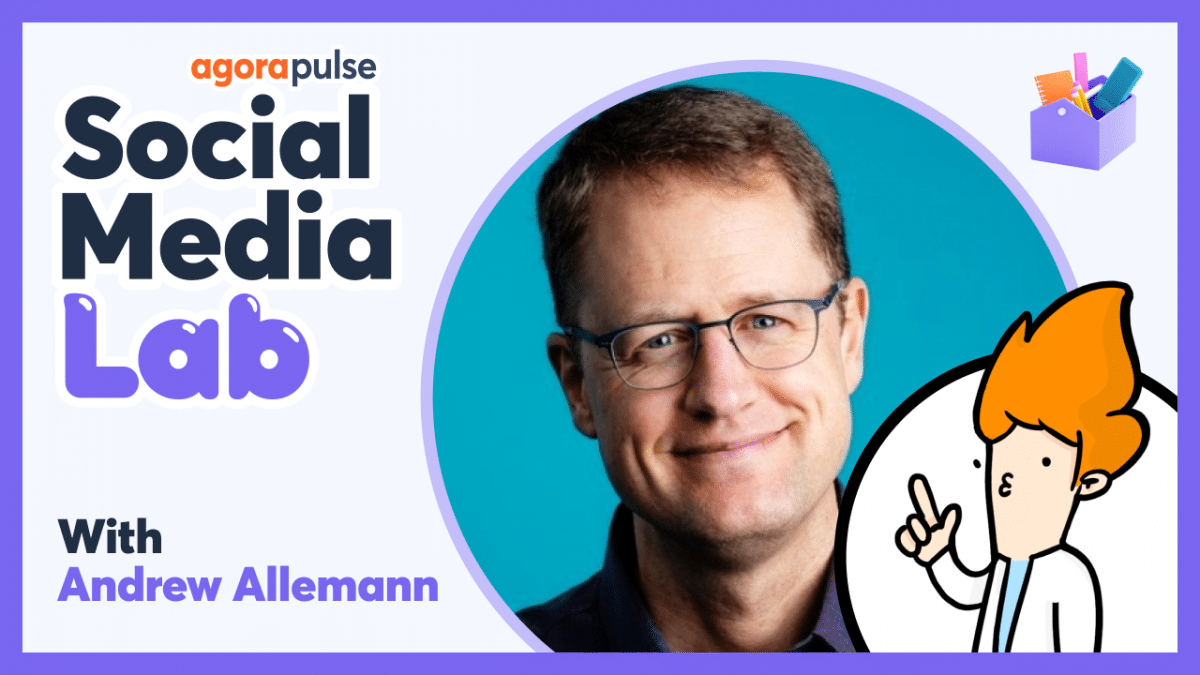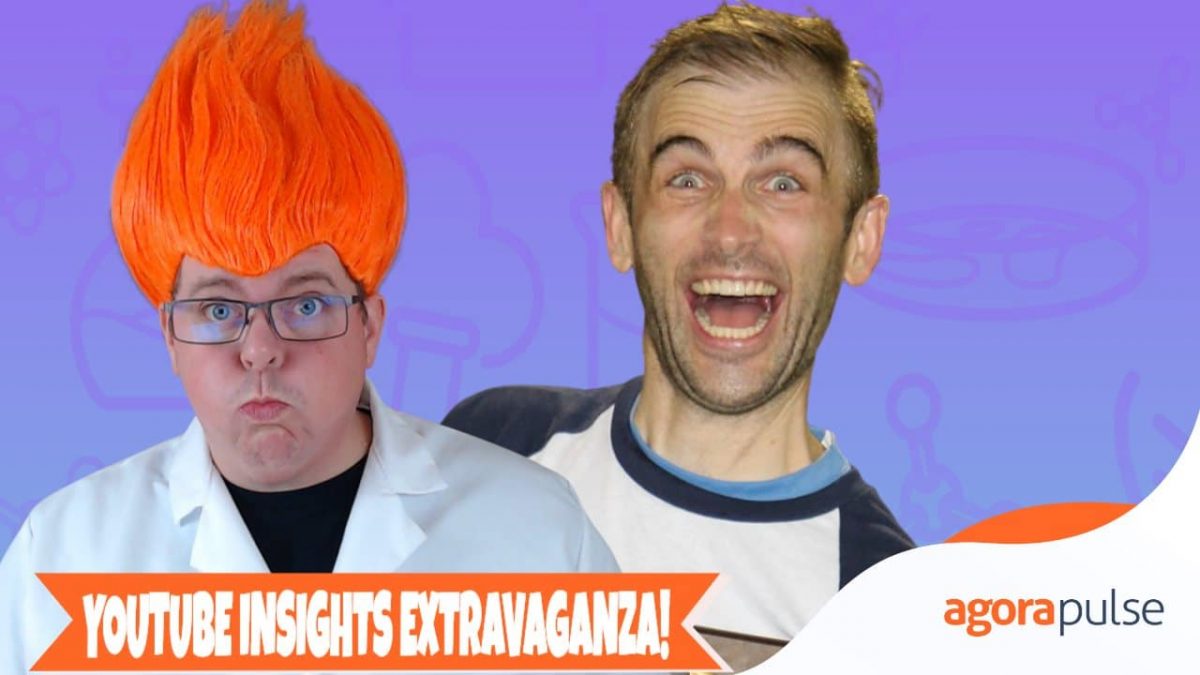
Exploding on YouTube with Suggested & Recommended Videos!
Subscribe to the podcast on Apple, Google or Spotify
This YouTube stat will blow your mind:
One billion hours of videos are watched on YouTube every single day! That’s a lot of time spent on YouTube.
But, how do you get your videos in front of new audiences without running ads?
Recently I interviewed Scott Simson on the Social Media Lab LIVE where he revealed information on how to get your YouTube videos in the Suggested & Recommended columns.
As a full-time content creator with almost 400,000 followers and CEO of Video Marketing World, Scott is recognized as an expert at video marketing and creating online communities. He is responsible for helping generate hundreds of millions of views on tons and tons of channels.
In our interview we covered five different topics related to YouTube:
- What is Suggested and Recommended Views? And Why are they important?
- Examples of success you’ve had with Suggested and Recommended Views.
- How do you get your videos Suggested and Recommended?
- How do you measure the data for Suggested and Recommended views?
- What role does SEO have in being found on YouTube?
We’ll summarize each point below. You can also view the replay of the Facebook live.
1. What is Suggested and Recommended Views? And Why Are They Important?
Suggested videos are shown on the right-hand side of YouTube while you’re watching another video on your desktop under the heading “Up Next”. If you have autoplay on that video will play without you taking any actions.
YouTube also shows “Recommended for you” on the right-hand column:
On a mobile device Suggested and Recommended videos show below the video you’re watching in the same manner:
You’ll also see Recommended videos on the home page of YouTube:
These videos are suggested/recommended by YouTube based on the videos you have recently viewed. YouTube assumes if you watched a video on a particular topic you probably want to see more videos on that same topic, or from the same YouTube channel.
YouTube will also suggest/recommend these videos based on what channels YouTube users who watched the same video subscribe to on YouTube or viewed after watching.
The more clicks and views you get on your videos that are suggested or recommended the more that video will show up for other YouTube users.
Scott says most of the views from “Recommended” typically occur on the YouTube home page, while “Suggested” happen while a user is watching a video.
The suggested and recommended videos seen are primarily free, but if it is an ad YouTube will state that. Most of the videos shown are seen based on the video you were watching and is the only other way people find your videos other than searching on YouTube.
2. Examples of Success You’ve had with Suggested and Recommended Views
Scott reveals to us that most of their views come from the suggested/recommended views, not from search on YouTube, which is why he focuses so much on his thumbnail.
His goal with video thumbnails is to cause an emotional reaction that motivates the viewer to click on the video and watch it.
Example 1:
This video has over 30 million views and is by far his most popular video:
This video was a silly skit Scott’s family did about how kids over exaggerate the size of bugs they find in the house. It was pretty low quality and the thumbnail is very low quality. But, because it’s so ridiculous it continues to get views 5 years later from being suggested and recommended.
Scott says the video has about a 21% click-through rate, meaning 1 out of every 5 people that see the video suggest it click on it and view the video.
The graph above shows how the views continue to spike, with no work on Scott’s part to make that happen. These spikes come from the video being suggested or recommended over and over and over again.
Some days this video might get 100,000 views, some days zero, just depends if YouTube is suggesting it or not.
Scott says YouTube will evaluate a video that is seeing high viewing spikes to ensure the content is within their guidelines and is serving users content they prefer to view. If viewers aren’t completing the video or disliking it this signals to YouTube that it should be suggested less. The opposite is true as well.
This review typically takes place right after a video is published, so you should expect odd ups and downs, but once it’s passed all of their tests the spikes will be less and views stay consistent.
Example 2:
Another example Scott leveraged to get his video in the suggested and the recommended list was by using this thumbnail that evokes lots of emotions:
This video was a mock drowning rescue to show families how to perform CPR, something every parent fears. The video currently has over 19 million views.
Scott says to focus on thumbnails that make viewers ask a question that can only be answered by watching the video.
In this graph you can see the “wave” of views the video got right after publishing and week after week it started to increase, then suddenly spikes to about 200,000, drops again then skyrockets to over 300,000 views.
This is evidence of how YouTube evaluates videos to see if users that see it are enjoying the content or not. Once your video passes these tests YouTube serves it to more people in the suggested or recommended column.
The reason this is so important for YouTube is they don’t want people to have a bad experience. The longer a YouTube user stays on YouTube watching videos the more money YouTube makes. This is why YouTube takes content quality so seriously.
Example 3:
This video was actually posted about a year before the previous example and has fewer views. The thumbnail evokes emotions, which is why it’s done well for their channel. But Scott didn’t feel the content was good enough or answered the questions it should have, thus they made the second version.
But even on this video, you can see the spikes created by suggested and recommended views:
The point Scott wanted to make by sharing this example was to find out what’s working on your channel and replicate it again while improving on the content.
Example 4:
The fourth example from Scott was another rescue drill type video, this time rescuing a child from a burning house:
Everything in this thumbnail was intentional to evoke some sort of emotion, the firemen, the firetruck with lights on, the girl helping her brother down the ladder, etc. Scott says these elements leave the YouTube user wanting to see more and they can only do that by clicking on the video and watching it.
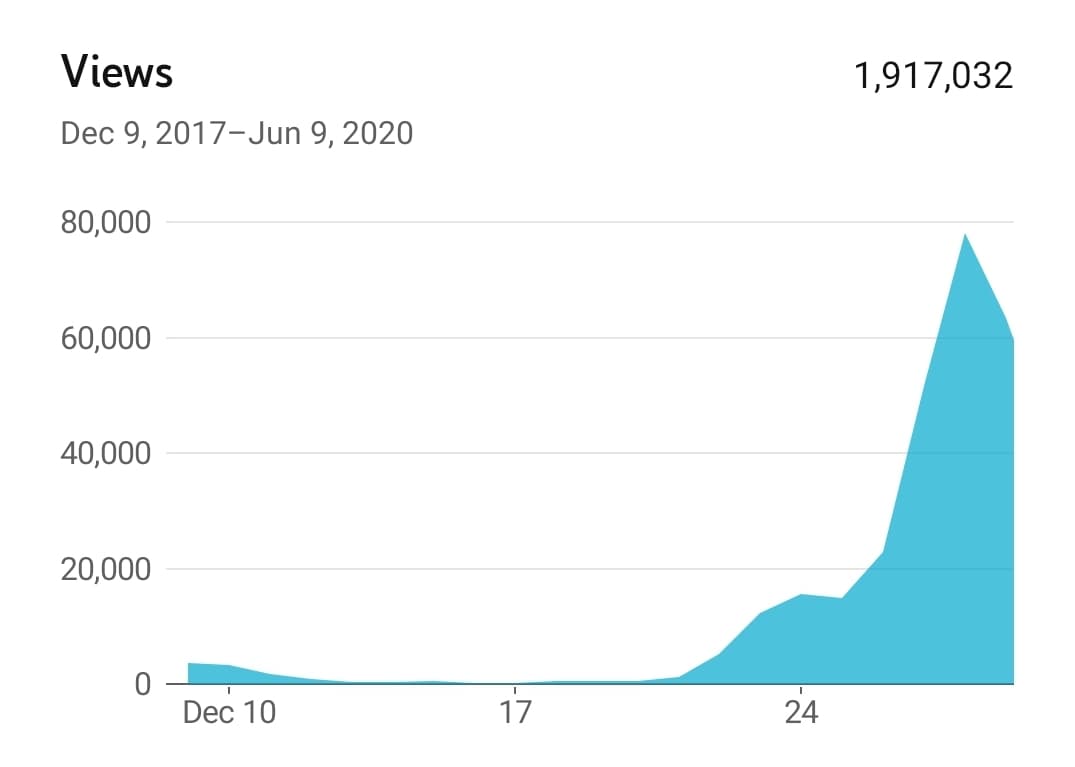
Scott recommends thinking outside the box when it comes to your content. How can you “bend the rules” and create content with thumbnails that cause attention and aren’t just typical “how-to” videos.
In the audio above Scott gives an example of how by simply creating emotional thumbnails and better titles for Operation Underground Railroad he was able to take them from 9,000 subscribers to 45,000 subscribers in a few months.
3. How Do You Get Your Videos Suggested and Recommended?
To get your YouTube video suggested or recommended you need a high Click-Through-Rate (CTR). The best way to get a high CTR is with a good thumbnail for your video, as Scott mentioned in his examples.
The thumbnail for your video might be more important than your title because it is what motivates a person to click on the video and view it. Do keep in mind that unless your title somehow correlates with the video subject a user is currently viewing your video won’t show up in the suggested column.
Appealing to the emotions of YouTube users is the key to a good thumbnail. Don’t give away everything on your thumbnail, but make it enticing so someone wants to click on it to find out more.
Scott says in order to help your videos show up more in the suggested and recommended columns YouTube channels need to push outside traffic to that video. Meaning another website or social media platform.
Scott’s secret tool for doing this has been Reddit, particularly in subreddits based around the topic of the video.
Reddit is a complicated platform to master, and you’ll need to avoid spamming the site. But, you’ll also need to be active on Reddit before just blasting the site with your YouTube links.
A fun technique Scott has found to get engagement is intentionally misspelling a word in the title of the post, this attracts trolls that have a good ranking, thus pushing your content higher on the subreddit.
There is no absolute formula to ensure your videos will show up as suggested or recommended but these things will get you a better chance of doing so:
- Great title that relates to the video
- Thumbnail that draws an emotional response
- High CTR
- Traffic from sources outside of YouTube (Reddit)
- Thinking outside the box and trying new things
4. How Do You Measure the Data for Suggested and Recommended Views?
You can only replicate getting your YouTube videos in the suggested and recommended columns by measuring your data.
YouTube’s analytics will show you all the traffic sources of your video views:
To access YouTube Analytics:
- Log in to your channel
- Click your avatar and select YouTube Studio
- Choose “Analytics” on the left sidebar
- Either click “SEE MORE” or scroll down and select a particular video
- Choose “Traffic Source” as shown in the image earlier, and whatever date range you’d like to view
Once you’re at this point you can choose “Suggested Videos” only to look at them, or simply look at all traffic sources.
If you aren’t getting any views from suggested videos you probably need to rethink your titles, description and thumbnails.
5. What Role Does SEO Have in Being Found on YouTube?
The final question I asked Scott Simson during our interview had nothing to do with suggested or recommended videos but is an important conversation regarding YouTube videos.
There are many in the YouTube marketing space that downplay the role of SEO and say it’s not important, while others focus all of their time on SEO.
Scott says YouTube will place your videos and channel into a specific category based on your title and content. For example, if you are vlogging about kayaking in every video you’ll be placed in an outdoor/kayak category along with similar videos. And that’s all SEO based.
According to Scott once you’ve established an audience and YouTube knows what your videos are typically all about SEO becomes less important, although it still plays a role.
He says focusing on the emotional reactions the video causes (ie people clicking to watch your video) is more important ultimately long term.
Scott dove into the concept of “initial view velocity” and its’ impact on your video’s success.
Initial view velocity, as defined by Scott Simson, is when your video gets a large number of views all at once, especially shortly after publishing the video. In his opinion, this velocity helps YouTube’s algorithm determine if the video is of high quality or not.
So yes SEO is important, but the quality of your video is ultimately the most important factor on YouTube as it pertains to success.
Learn More About YouTube Marketing
We appreciate Scott Simson taking the time out of his day to be on our show, and hopefully you learned lots from his wisdom.
If you want to learn more about dominating YouTube be sure to follow Scott:
